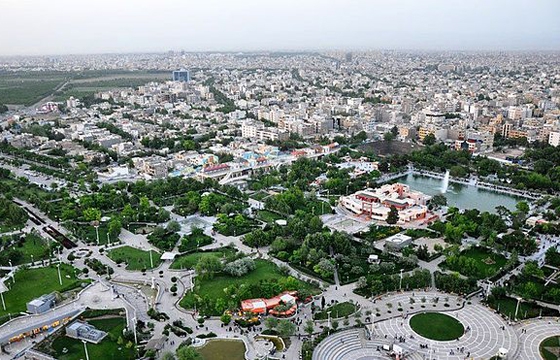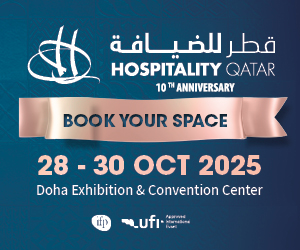Located 850km north-east of Tehran is Iran’s second-largest city, Mashhad. Popularly known as the holiest city in the country, Mashhad is also the capital of Razavi Khorasan province and close to the borders of Turkmenistan and Afghanistan, ensuring that it has huge cultural and commercial significance within the country.
While the country has always been a major trading center, dating back to when it was a crucial stopping point on the Silk Road, what gives it its true importance is the shrine, considered the largest mosque in the world by dimension and the second largest in terms of capacity.
Every year, millions of people come to the city in pilgrimage, bringing the associated benefits in terms of business and revenue to the economy of Mashhad. It is estimated that 25 million visitors come to the city annually, which makes it ripe for significant tourism investment, especially now that restrictions around the country’s economic growth are loosening.
The shrine is not the only attraction in the city, with the pleasant climate, surrounding mountains and development of entertainment and retail options meaning visitors are arriving with more than just religious tourism in mind. Over the last few years, Mashhad has seen a surge in construction, with local investors building shopping malls, recreational centers and amusement parks to cater to all kinds of tourists and visitors.
Given the numbers in play, it’s hardly surprising that the hospitality industry is one of the prime movers in this construction boom. Although the city already boasts the most four- and five-star hotels in the country, it is estimated that capacity during peak season can only reach 75,000.
However, this is still a massive improvement, as just over three years ago, there were only 75 hotels in the city. Recognizing this, last year the government of Iran implemented a 20-year vision plan – by 2025, it aims to increase revenue from the tourism industry to as much as $30 billion.
With Mashhad attracting the majority of religious tourists entering the country, it makes absolute sense for it to receive significant investment. Thus it’s no surprise to learn that there are currently some 200 hotels at various stages of construction in the city. These hotels are expected to help Mashhad meet the targets set by the 2025 Vision Plan, which expects to see the holy city annually host 40 million pilgrims and tourists, both from within the country and abroad.
Clearly, there’s a massive window of opportunity open for international investors, especially with the lifting of economic sanctions. One company to quickly seize its chance is Dubai-based CommoditEdge. Established in 2012, the company is part of a diversified group of companies owned by the Alizadeh Family, which is actively engaged in manufacturing, engineering and trading activities in Iran and international markets. CommoditEdge itself is involved in the sourcing and supply of raw materials to steel mills, while also assisting raw material producers and suppliers establish stable supply agreements.
With the lifting of sanctions, the company and its affiliates recognized the significant gap in the hospitality market and were keen to take the plunge and bring the first international five-star hotel in Iran to Mashhad. With the stakes so high, they needed to make sure they brought the right people on board to ensure the entire project is a success, from planning through to construction, completion and operation.
Enter FHSI Architects, an award-winning Australian architectural firm that has gained a reputation for being a firm that looks at its projects as part of a bigger picture. For this boutique firm, it’s not just about how the project looks or functions, but also about how it fits in with its surrounding environment.
“CommoditEdge provided us with a detailed brief for the site,” says Fariborz Hatam, founder of FHSI Architects and the man tasked with bringing the project to life. “They had conducted a comprehensive feasibility study for Mashhad to highlight the financial viability of the project. It’s going to have 5,000sqm of retail and a 235-key hotel space. It is also the first international five-star hotel in Iran as well. While there are other five-star hotels in the country, they aren’t internationally operated.”
“The city is the hometown to some of the most significant Iranian literary figures and artists, while also being a place where millions of pilgrims visit each year. The majority of people coming to this city are going for meditation, prayer and worship. Therefore, the space that you create has to be very calm and in a beautifully planned environment.”
Keeping in mind this cerebral reputation, Hatam says he was careful to ensure that the planning and design for the hotel complex involved what he calls a “more personalized design concept formulation”.
The design incorporates a number of environmentally friendly passive climate-control devices, which will minimize energy consumption for the building. This includes solar shading for the hotel rooms, and the vertical gardens, which act as ‘green lungs’ for the development.
One of the biggest challenges associated with the design of the project is the plan for a 24-hour retail segment in the basement. This certainly makes sense, with the project located on one of the busiest arterial roads in the city.
However, it meant the FHSI design team was faced with finding a way to incorporate 5,000sqm of retail space operating around the clock, while also keeping in line with the core concept of the project – to provide a luxurious, calm and contemplative environment for hotel guests.
“There are currently international contractors on the ground [in Iran], building large-scale projects. We anticipate collaborating with them,” says Hatam. “Also, during the construction phase, a designated FHSI team will be on-site to ensure that quality and the level of detail required are fully achieved.”
As a boutique Australian design practice committed to providing innovative and high-quality design solutions for architecture, interiors and master planning, FHSI Architects works both locally and internationally on a wide range of projects from studios in Dubai, Sydney and Perth.
ME Construction
16 December









































































